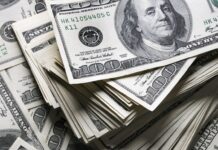
In 2020, the number of adults in the United States measured just over 258 million. The average debt per person in the US measured at a healthy $5315. That might not seem like a large number. Until you say that in April of 2022, American citizens owed a massive $807 billion over 506 million credit card accounts. And that’s just credit cards.
Student loans are still at a significant $1.7 trillion, an increase of 102% over the last decade. Add in that colleges and universities have raised tuition prices steadily to the tune of 63% over a ten-year span, and it’s a recipe for taking on huge amounts of debt.
According to Zippia, the average student loan debt per person in 2022 sits at $32,731, with a payment of $393 per month. On average, it takes 20 years to repay student loan debt, including the compounding interest.
Along with personal credit card and student loan debt, Americans also have massive foreclosure and mortgage debt. Looking at overall debt, meaning credit cards, home loans, equity lines of credit, mortgages, student loans, car loans, and any other outstanding debt, the average American household owes somewhere in the ballpark of $155,622. Times that by the 258 million adults in the US, it’s easy to see why America is facing a debt crisis.
Government Debt
Citizen debt in the US is substantial, but it is nothing compared to the trillions owed by the US Government. Japan is the largest purchaser of the $7.6 trillion national debt held by foreign countries, usually in the form of US Treasury bonds. They hold a significant $1.3 trillion. China is a close second with $1.07 trillion.
Because the US dollar is strong and has a premium position as the world’s reserve currency, even as inflation surges, the US Government can sell national debt quickly. But what would happen if China decided to sell its US Treasury bonds?
First and foremost, it’s unlikely that China would feel the need to sell off its US Treasury bonds. The main reason is that it would hurt their economic growth. Their currency, the Yuan, sometimes called the renminbi, would gain value. This would make them much less competitive and cause Americans to start looking for cheaper alternatives for goods and services.
Not only that, but China would also need to expand its exports and the domestic demand for the goods and services they produce. Without these pillars going down first, it would be economically unwise for China to sell off its US Treasury bonds.
However, if they still went forward with a sell-off, the US economy would suffer significantly, no matter how slow. The demand for the US dollar would drop, and the Yuan would gain value. This would mean that Chinese companies, who get paid in US dollars for their exports, would likely want Yuan payment. All those US dollars would come flooding back into the US economy, devaluing the dollar almost overnight. Suddenly the dollar’s purchasing power would drop to next to nothing, and the US would enter an unprecedented period of massive recessionary problems.
Wipeout or Great Reset?
When President Biden was running for office, one of his big-ticket promises was to cancel student debt, something he worked on during his first year in office. Still, the immense student debt problem looms large in the overall debt crisis America is facing. Getting ahead of the huge amounts of personal debt Americans own is a problem in itself. After all, how do you teach a healthy portion of 258 million people how to handle their money more wisely?
One question on the mind of anyone who’s economically focused or financially motivated is this: What happens to my assets (cash, stocks, bonds, etc.) if the dollar collapses? The inflation we’re already suffering through indicates that the dollar is not well. Should it collapse, some definite markers will affect nearly everyone in the US.
- Your money, the fiat currency in your bank account, will go from purchasing less to purchasing next to nothing. Instead of bread, milk, and butter costing a few dollars more, you’ll be hoping that a wheelbarrow full of cash can buy you a loaf of bread. And don’t make the mistake of thinking that technology will keep us from sinking into situations the US hasn’t seen since the Great Depression. If it happened here once, it could certainly happen again.
- Your debt will follow you: Some people, for whatever reason, think that if the dollar collapses, you’ll be able to wipe out your existing debt, but that’s not necessarily true unless you happen to have massive amounts of cash to burn, literally. Your debt will likely follow you through this time.
- Price-Wage Death Spiral: Tell me if this sounds familiar…Prices go up, wages go up, prices go up more, wages don’t keep pace with prices, and boom, the government prints more money to ‘stimulate’ the economy. This is known as the price-wage death spiral, and the more money that gets printed, the more in debt the US government grows, inflation turns into hyperinflation, and there goes the value of all your fiat currency.
While the dollar is still holding strong, there’s little left of the foundation that keeps the dollar strong. And as the world looks for answers to individual economic issues, it won’t take much more for them to embrace a new world currency in hopes of strengthening their own economic situations.
The answer for Americans lies in dealing with as much debt as possible and stocking up on gold and silver, which will never lose their value no matter what happens to the US dollar.
Previously published at Wealth of Geeks.
Sponsored: Find a Qualified Financial Advisor
Finding a qualified financial advisor doesn’t have to be hard. SmartAsset’s free tool matches you with up to 3 fiduciary financial advisors in your area in 5 minutes. Each advisor has been vetted by SmartAsset and is held to a fiduciary standard to act in your best interests. If you’re ready to be matched with local advisors that can help you achieve your financial goals, get started now.






